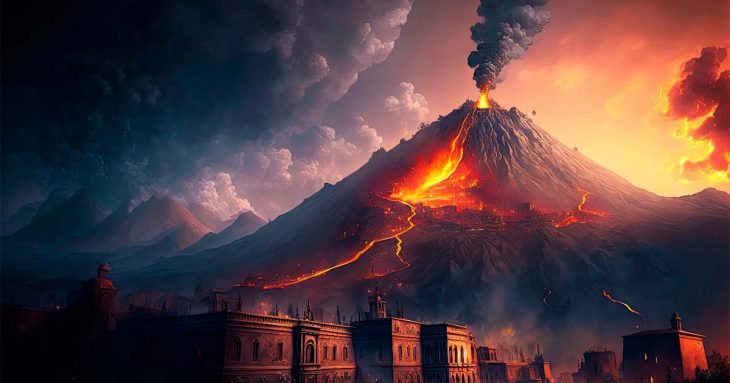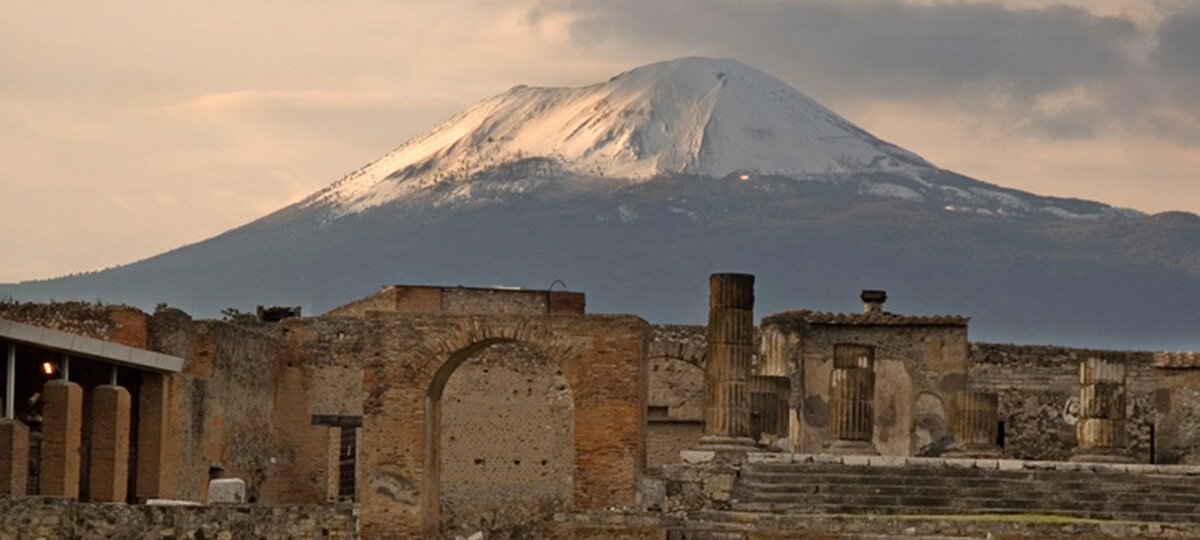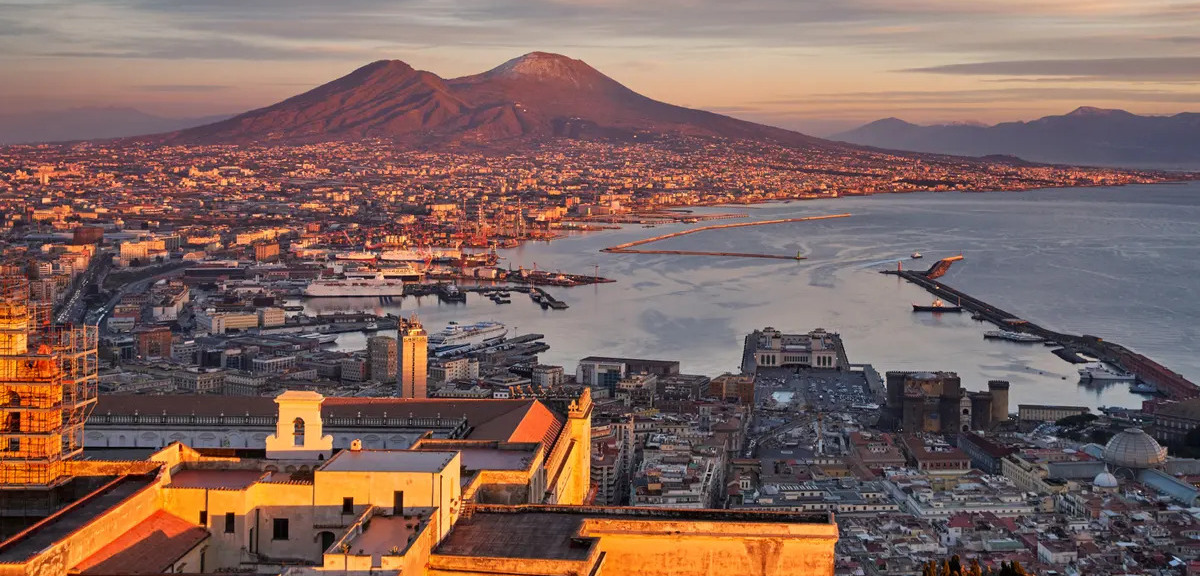
Mount Vesuvius is one of the most famous volcanoes in the world, known for its devastating eruption in 79 AD that buried the cities of Pompeii and Herculaneum under layers of ash and debris. Located in Italy’s Campania region, near the city of Naples, Mount Vesuvius has a rich history and continues to be an active volcano. In this article, we will explore 15 fascinating facts about this iconic natural wonder, highlighting its geological significance, historical impact, and ongoing activity.
Formation and Geological Significance
Mount Vesuvius is part of the Campanian volcanic arc, which stretches along the western coast of Italy. It is classified as a stratovolcano, characterized by steep slopes and a conical shape. The volcano was formed through the subduction of the African tectonic plate beneath the Eurasian plate, resulting in intense volcanic activity in the region.
Eruption History
Vesuvius has experienced numerous eruptions throughout its history. The most famous eruption occurred in 79 AD, burying the Roman cities of Pompeii and Herculaneum. However, Vesuvius has erupted several times since then, with notable eruptions in 1631, 1794, 1906, and 1944.
Pompeii and Herculaneum
The eruption of Vesuvius in 79 AD had a catastrophic impact on the nearby cities of Pompeii and Herculaneum. The eruption buried these cities under a thick layer of ash and pumice, preserving them remarkably well. Today, these archaeological sites provide a unique glimpse into ancient Roman life.
Volcanic Activity and Monitoring
Mount Vesuvius is still an active volcano, and its activity is closely monitored by the Osservatorio Vesuviano. The observatory’s scientists analyze seismic activity, gas emissions, and ground deformation to predict and understand volcanic behavior. This monitoring plays a crucial role in ensuring the safety of the surrounding population.

Height and Location
Standing at approximately 1,281 meters (4,203 feet) tall, Mount Vesuvius offers breathtaking panoramic views of the Bay of Naples and the surrounding landscape. Its strategic location near Naples makes it easily accessible for tourists and researchers alike.
National Park Status
In 1995, the Vesuvius National Park was established to protect the unique natural and cultural heritage of the area. The park covers an area of approximately 8,000 hectares (19,768 acres) and includes not only the volcano but also the surrounding forests and wildlife.
Hiking and Excursions
Mount Vesuvius attracts adventure enthusiasts and nature lovers who enjoy hiking its slopes. Visitors can hike along designated trails that lead to the crater’s edge, providing an exhilarating experience and a chance to witness the volcano’s raw power firsthand.
Crater Exploration
At the summit of Mount Vesuvius lies a massive crater, measuring approximately 300 meters (984 feet) in diameter. Guided tours allow visitors to explore the crater and learn about the volcano’s inner workings. The view from the top is awe-inspiring, offering a glimpse into the heart of this natural phenomenon.

Flora and Fauna
Despite its volcanic nature, Mount Vesuvius supports a variety of plant and animal life. The slopes are covered with lush vegetation, including pine forests and Mediterranean shrubs. The area is also home to several bird species and small mammals, adapting to the volcano’s unique ecosystem.
Vesuvius Wines
The fertile volcanic soils around Mount Vesuvius have been ideal for viticulture for centuries. The region produces renowned wines, such as Lacryma Christi, known for their distinct flavor profiles. Visiting the vineyards around the volcano provides an opportunity to taste these exceptional wines while enjoying the scenic beauty of the area.
Volcano Monitoring and Technology
The monitoring of Mount Vesuvius involves the use of advanced technology. Seismographs, GPS, and satellite data contribute to a comprehensive understanding of the volcano’s behavior. Continuous research and technological advancements help scientists better predict eruptions and mitigate potential risks.
Impact on Art and Culture
The eruption of Mount Vesuvius in 79 AD left a lasting impact on art and culture. The city of Pompeii, frozen in time under layers of ash, has provided archaeologists with invaluable insights into ancient Roman civilization. The preserved artifacts and artworks have inspired countless artists and continue to captivate visitors from around the world.
Volcanic Hazards
Living in close proximity to an active volcano comes with inherent risks. The population around Mount Vesuvius is aware of the potential hazards, including lava flows, pyroclastic flows, and ashfall. Authorities have developed evacuation plans and emergency procedures to ensure the safety of residents in the event of an eruption.

Vesuvius and the Future
Scientists continue to study Mount Vesuvius to deepen their understanding of volcanic activity and improve eruption forecasting. Ongoing research aims to refine hazard assessment models and enhance early warning systems, providing valuable information to protect lives and property in the future.
Tourism and Economic Impact
Mount Vesuvius is a major tourist attraction, drawing millions of visitors each year. The tourism industry around the volcano provides employment opportunities and stimulates the local economy. The unique combination of natural beauty, historical significance, and scientific interest makes Vesuvius a destination unlike any other.
Conclusion
Mount Vesuvius stands as a testament to the Earth’s raw power and the delicate balance between human civilization and the forces of nature. Its historical significance, ongoing volcanic activity, and captivating beauty make it a must-visit destination for travelers from around the globe. By embracing both the scientific and cultural aspects of Mount Vesuvius, we can appreciate the intricate interplay between geological phenomena and the human experience.
Frequently Asked Questions (FAQs)
Is Mount Vesuvius still active?
Yes, Mount Vesuvius is still an active volcano. Its activity is closely monitored by the Osservatorio Vesuviano to ensure the safety of the surrounding population.
Can you hike Mount Vesuvius?
Yes, visitors can hike Mount Vesuvius along designated trails that lead to the crater’s edge. It offers a thrilling experience and the opportunity to witness the volcano’s power.
What happened during the eruption of 79 AD?
During the eruption of 79 AD, Mount Vesuvius buried the Roman cities of Pompeii and Herculaneum under layers of ash and debris, preserving them remarkably well and providing a unique glimpse into ancient Roman life.
How tall is Mount Vesuvius?
Mount Vesuvius stands at approximately 1,281 meters (4,203 feet) tall, providing breathtaking views of the Bay of Naples and the surrounding area.
What is the Vesuvius National Park?
The Vesuvius National Park was established in 1995 to protect the natural and cultural heritage of the area. It covers approximately 8,000 hectares (19,768 acres) and includes the volcano, surrounding forests, and wildlife.
Was this page helpful?
Our commitment to delivering trustworthy and engaging content is at the heart of what we do. Each fact on our site is contributed by real users like you, bringing a wealth of diverse insights and information. To ensure the highest standards of accuracy and reliability, our dedicated editors meticulously review each submission. This process guarantees that the facts we share are not only fascinating but also credible. Trust in our commitment to quality and authenticity as you explore and learn with us.
